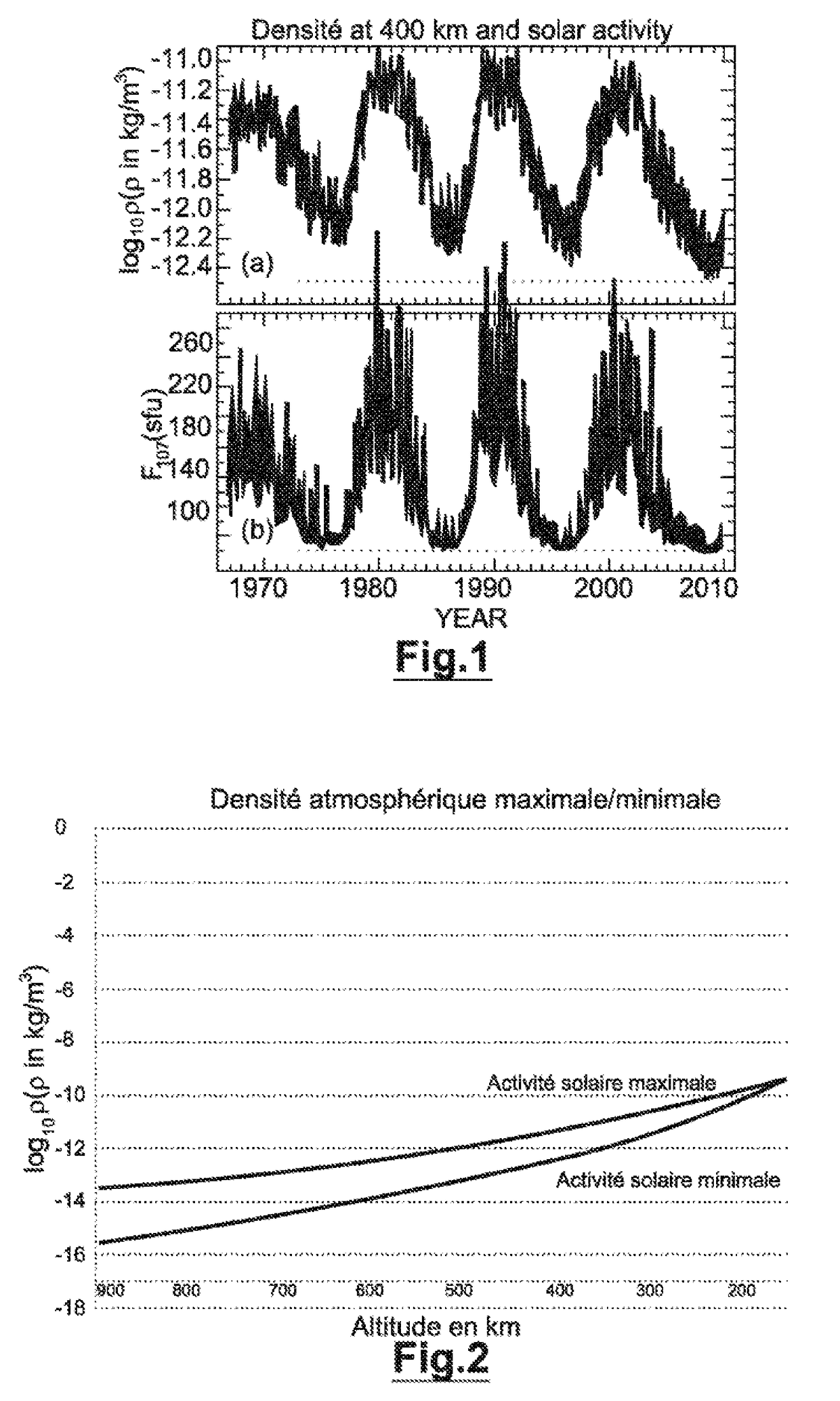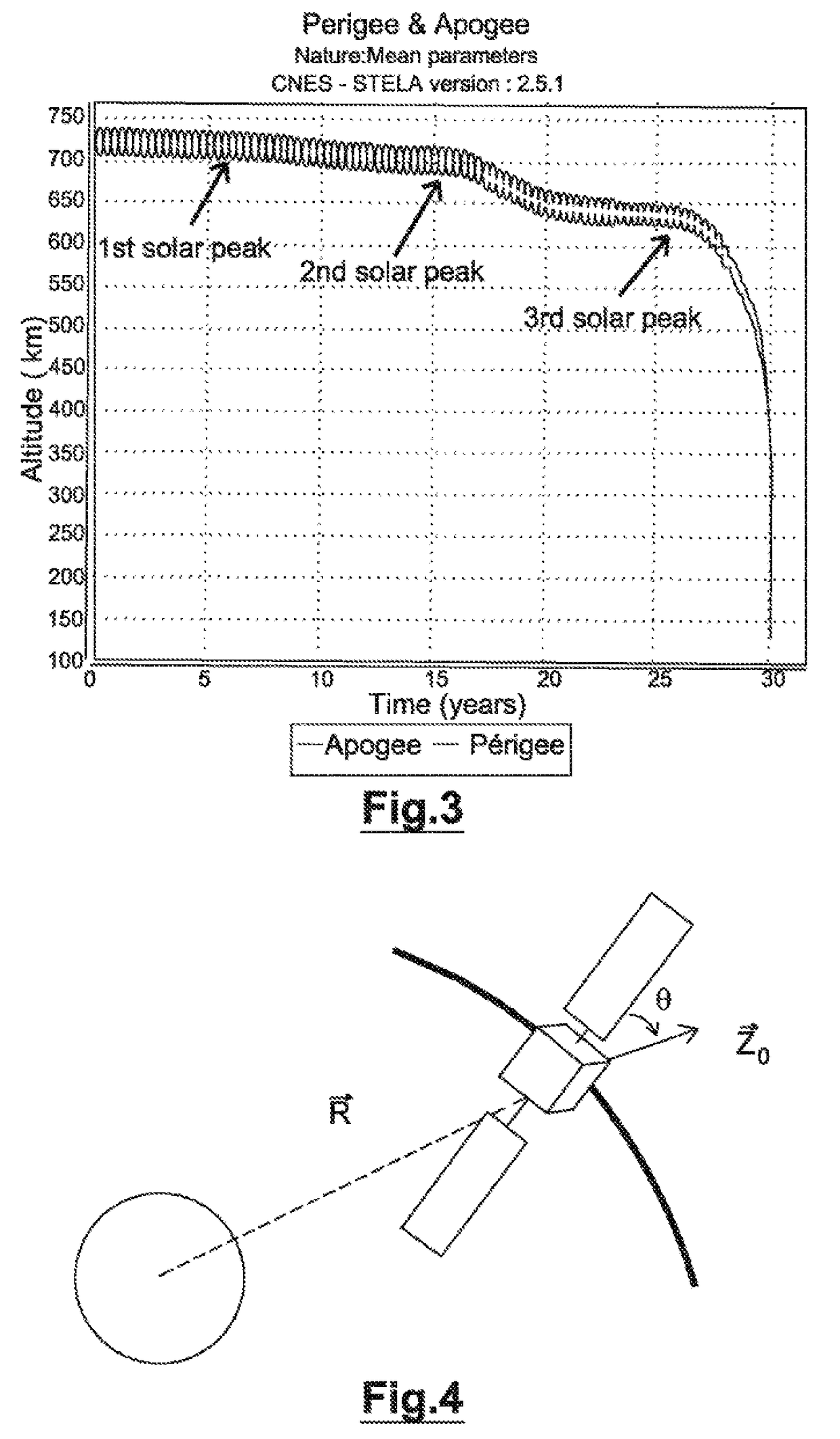Aerobraking satellite deorbiting system
- Summary
- Abstract
- Description
- Claims
- Application Information
AI Technical Summary
Benefits of technology
Problems solved by technology
Method used
Image
Examples
Embodiment Construction
[0055]The principle of the disclosed embodiment consists in equipping a satellite with a deorbiting system that is deployed at the satellite end of life and combines a deorbiting sail and a gravity gradient device to maintain said sail in a position generating a high drag adapted to brake the satellite and therefore to cause it to lose altitude.
[0056]The device stabilizes the satellite at end of life by means of the gravity gradient device, the sail and the gravity gradient device being designed so that the sail is the most perpendicular to the trajectory despite the flipping torque caused by drag. The disclosed embodiment also has the object of designing the sail and the gravity gradient device so that the denser the residual atmosphere the more the sail departs from this perpendicular position but remains within the stable range of the system.
[0057]The gravity gradient device more particularly consists of a mast fixed to the satellite and a remote mass at the opposite end of the m...
PUM
 Login to View More
Login to View More Abstract
Description
Claims
Application Information
 Login to View More
Login to View More - R&D
- Intellectual Property
- Life Sciences
- Materials
- Tech Scout
- Unparalleled Data Quality
- Higher Quality Content
- 60% Fewer Hallucinations
Browse by: Latest US Patents, China's latest patents, Technical Efficacy Thesaurus, Application Domain, Technology Topic, Popular Technical Reports.
© 2025 PatSnap. All rights reserved.Legal|Privacy policy|Modern Slavery Act Transparency Statement|Sitemap|About US| Contact US: help@patsnap.com



